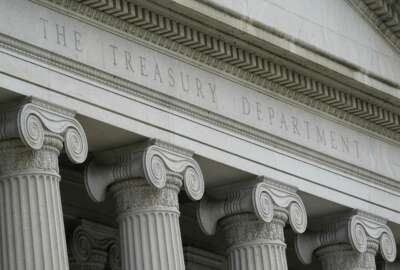Bureau of the Fiscal Service lowers grant reporting burden through blockchain
The bureau spent years on several blockchain pilots, but is now partnering with the National Science Foundation to help reduce the reporting burden for grant...
The Treasury Department’s Bureau of the Fiscal Service is testing out ways to streamline grant payment processes through blockchain.
The bureau spent years on several blockchain pilots, but is now partnering with the National Science Foundation to help reduce the reporting burden for grant recipients, while improving transparency around federal spending.
Craig Fischer, a supervisory program manager in the bureau’s Office of Financial Innovation and Transformation (FIT), said NSF reached out to Fiscal Service in 2019, looking to better understand how blockchain could help reduce the reporting burden for grant recipients.
Fischer said in an interview that the bureau’s blockchain proofs of concept focus on improving visibility around grant funding, particularly when grant funding moves from the prime grant recipient down to the sub-recipient level.
“When that occurs today, that funding transaction is very opaque, and we don’t see those transactions. Because we don’t see it, we asked those grant recipients to do a lot of reporting for us,” Fischer said.
The bureau sees the blockchain as a technology that can combat fraud and improper payments, as well as reduce reporting burdens and increase transparency around federal spending.
To further this work, the bureau recently awarded a task order that seeks to answer unresolved questions focused on setting up digital wallets and cross-agency authorities.
The bureau’s FIT office focuses on ways it can reduce costs, increase transparency and improve delivery of agencies’ missions through scalable technology.
Much of the bureau’s current blockchain work focused on tokenization, a process in which an asset is represented as a token that can be moved, stored or recorded on a blockchain.
Fischer compared tokens on a blockchain to poker chips at a casino. The chips all represent different values, but aren’t worth anything until they’re cashed in.
“Those chips have no value outside of that casino. That is effectively tokenization. You’re representing those dollars, and you can use those chips to play,” he said. “Imagine those chips, though, carrying and retaining that history of every game it’s ever played, every person it’s ever touched. That history, that additional transparency, that’s effectively what we’re doing with grant payments. We are tokenizing those grant payments, combining it with all this grant information, and as this information moves from the federal agency to the prime recipient, to the sub-recipient, we have a lot more transparency that we’re turning into less reporting for those grant recipients.”
While the bureau created the mechanism to turn grant payments into tokens, Fischer said the bureau has not yet developed the capability to turn those tokens back into cash.
“In this next phase, we’re going to be looking to connect our blockchain application to agencies’ financial management systems, so that we can connect all the plumbing pieces that are necessary for actually making that federal payment,” Fischer said.
The bureau, as part of the first phase of its proof of concept, found that blockchain does result in less reporting for grant recipients. Fischer, however, said the bureau, in developing a business case for blockchain in the federal financial management space, is conducting a cost-benefit analysis and reviewing alternative technologies to the blockchain.
The bureau has also partnered with universities and the grants Quality Service Management Office (QSMO) at the Department of Health and Human Services to better understand all of the different types of grants issued by federal agencies.
Fischer said the bureau, meanwhile, is looking at federal use cases for blockchain beyond grants management. He said the bureau is looking to better understand infrastructure challenges common across the federal government to ensure wider adoption of blockchain in federal payments.
“There really is no perspective at this point, what a blockchain infrastructure looks like for the federal government. We want to take that first step and add a perspective on what something could look like in this more this decentralized blockchain ecosystem,” Fischer said.
The bureau last month also launched the Treasury Financial Experience, a new website giving the federal financial workforce easier access to financial management guidance.
Adam Goldberg, the acting assistant commissioner for the FIT office, said the new website gives agencies a better way to review the thousand-plus pages of the Treasury Financial Manual, while also improving the customer experience the bureau offers other agencies as a shared service provider.
“The big thing that agencies came to us and said they wanted was a Google-like search capability,” Goldberg said.
Copyright © 2025 Federal News Network. All rights reserved. This website is not intended for users located within the European Economic Area.
Jory Heckman is a reporter at Federal News Network covering U.S. Postal Service, IRS, big data and technology issues.
Follow @jheckmanWFED






